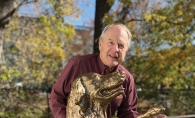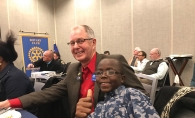You might take your kidneys for granted. But if you heard the story of Edinans Kathleen Carter and Kim Pendergast, you might give thanks to those fist-sized body purifiers that work hard for you every day. Carter and Pendergast graduated from Edina High School together in 1979. “We met in seventh grade,” says Pendergast. “We’ve been close friends ever since.” So in fall 2011, when Pendergast called Carter to report that her kidneys were failing, Carter acted. “When Kathleen told me she wanted to donate one of her kidneys to me, my first reaction was one of uncertainty; but even though she isn’t family, I knew it could possibly work,” recalls Pendergast, who lives with her son Christian, 14, in Los Angeles, where she works in the television industry. “We both got tested and everything seemed to be a match. When we were told Kathleen could be my living donor, I asked her, ‘Are you sure about this?’ Kathleen responded, ‘Well … yeah!” More than 70,000 people in the United States need a kidney transplant, with a current waiting list of approximately six years. Since time is crucial for those in need, Living Donor Kidney transplants are becoming an increasingly popular alternative. “I had been on the kidney transplant list for five years,” says Pendergast. “As time passed, I grew more and more tired and was less able to live my life in an active way.” Pendergast’s kidney failure was the result of prescription medications she had to take after receiving a double lung transplant 18 years ago. “Kim’s health has never been a result of her actions, she simply got dealt a bad hand,” says Carter. “She is one of the most positive people I know. Despite everything she’s been through, she’s never complained. I had a healthy kidney, and she needed one. The decision was easy for me to make.” Carter, who lives in Edina and is vice president of business development for Archway Marketing Services, was preparing for a trip to Italy with her friends when she received the call telling her that it was time for the surgery. “I canceled my trip and was on the next plane to California.” It is a common misconception that living organ donations can only be made between relatives. While family members are certainly a viable option, the current anti-rejection medications are so advanced that unrelated individuals can just as easily become living donors. “The process is truly a miracle,” says Carter. “It’s amazing that a person who is healthy can give a part of themselves to a person who is sick, and both individuals can go on to live happy, active lives.” During a living procedure, a healthy kidney is removed from a living donor and placed into the body of the recipient. “I woke up from surgery feeling immediately better,” says Pendergast. “My body began to process fluids again, and I was able to return home after just six days. I didn’t know how badly I had felt until I started feeling better.” Carter’s recovery process took longer than she had anticipated. “Recovery is harder for the donor than for the recipient,” she said. “I was allergic to the pain medications, so I opted not to take them. Thankfully, my friends flew out to California to help me through my recovery in the hospital. I felt so blessed to have them there for me. I flew home to finish healing and returned to work. After six weeks, my body adjusted to having only one kidney, and I’ve been able to live a normal life ever since.” While Pendergast’s kidney failure was out of her control, there are steps everyone can take to help stay in good health. The National Kidney Disease Education Program encourages people to maintain healthy blood pressure and cholesterol levels, limit sodium intake, eat heart-healthy foods, reduce alcohol intake, and exercise and maintain a healthy weight. Pendergast and Carter traveled to Paris to celebrate their 50th birthdays, which are five days apart. “We share a unique experience that no one can ever take away from us, [and] we are still as close as we’ve always been,” says Carter.&Learn more about Living Kidney Donor Transplants by visiting the National Kidney Foundation at kidney.org/transplants/livingdonors.
Menu
From the June 2013 issue
Edina Friends Experience Miracle of a Living Donor Kidney Transplant
Friends Kathleen Carter and Kim Pendergast experience the miracle of a living donor kidney transplant.
Kathleen Carter and Kim Pendergast (right) at Carter's Edina home.









